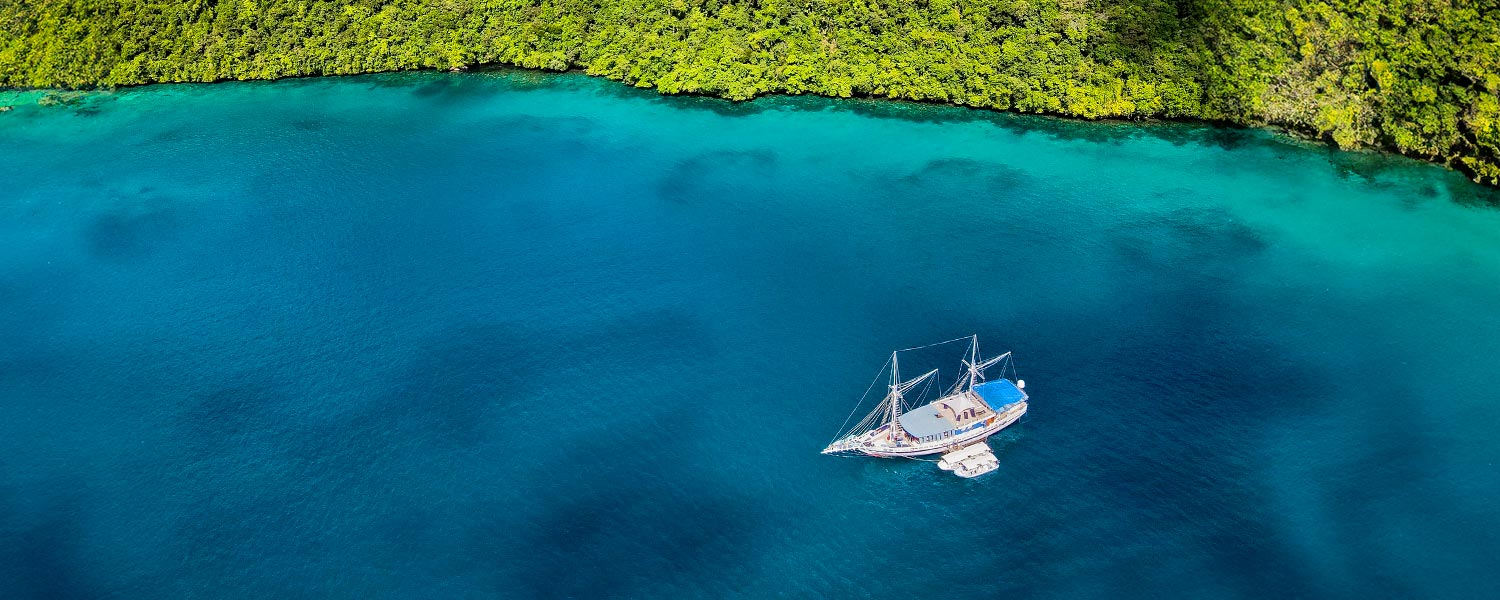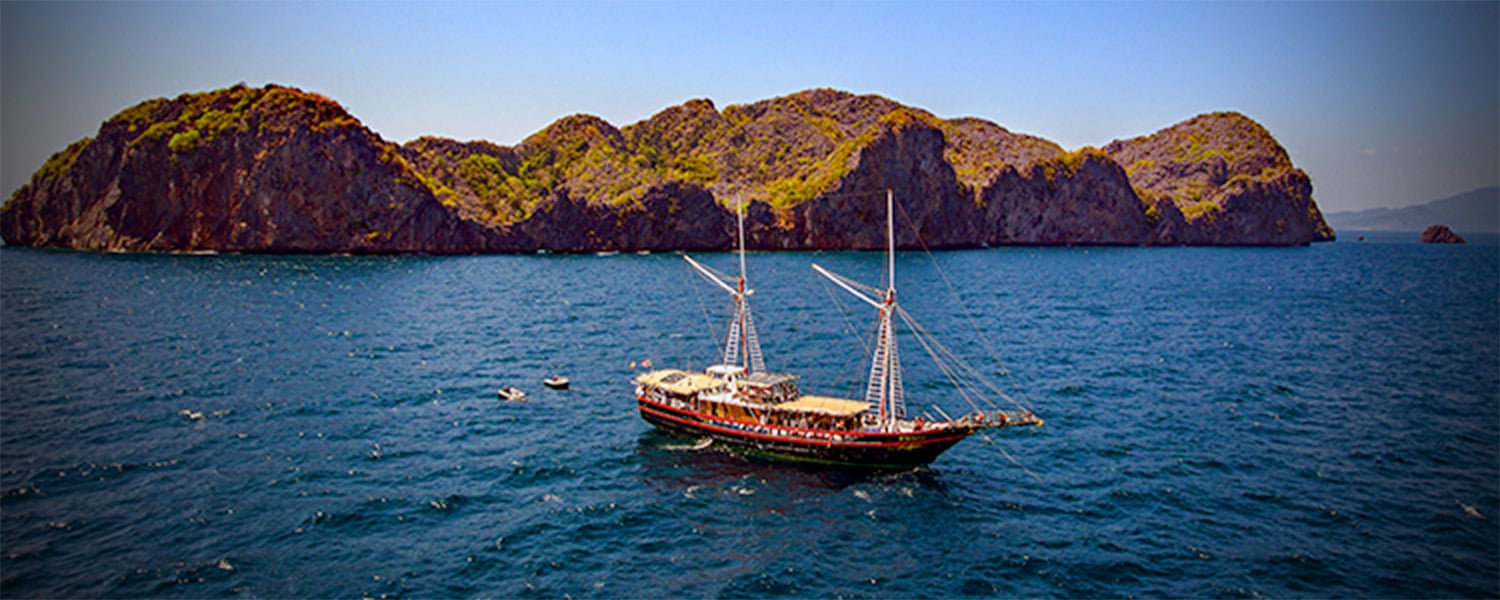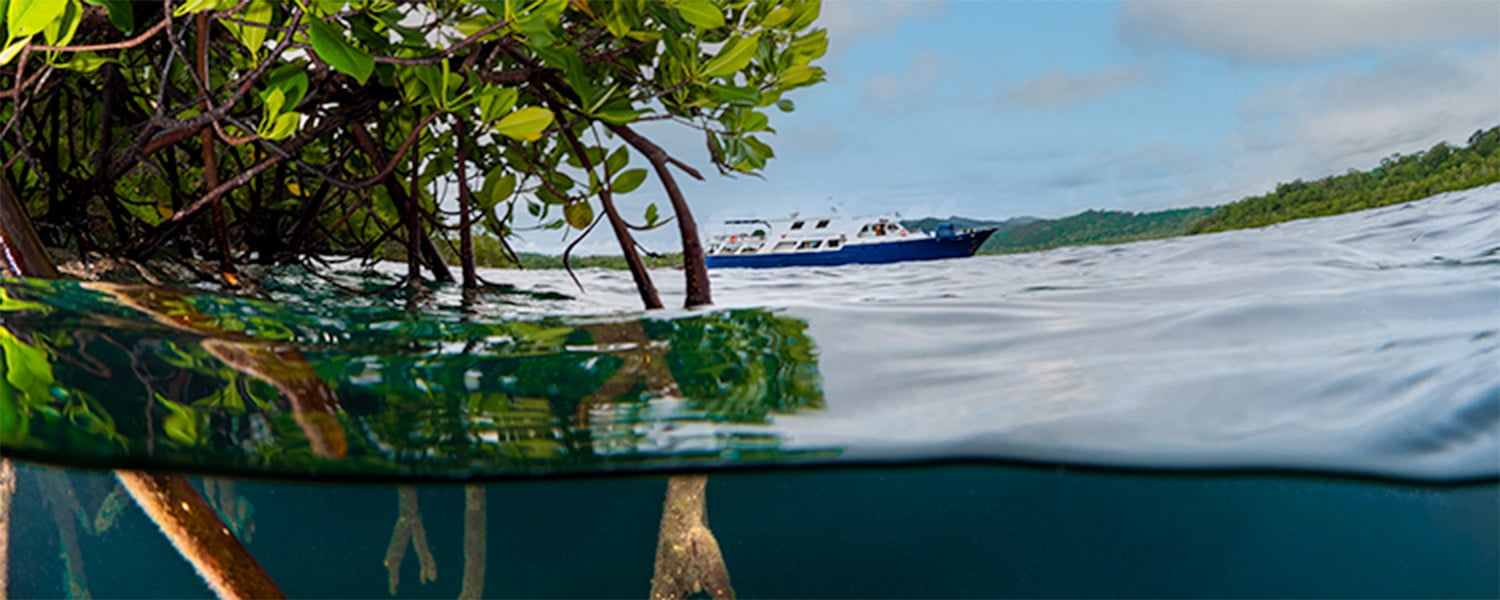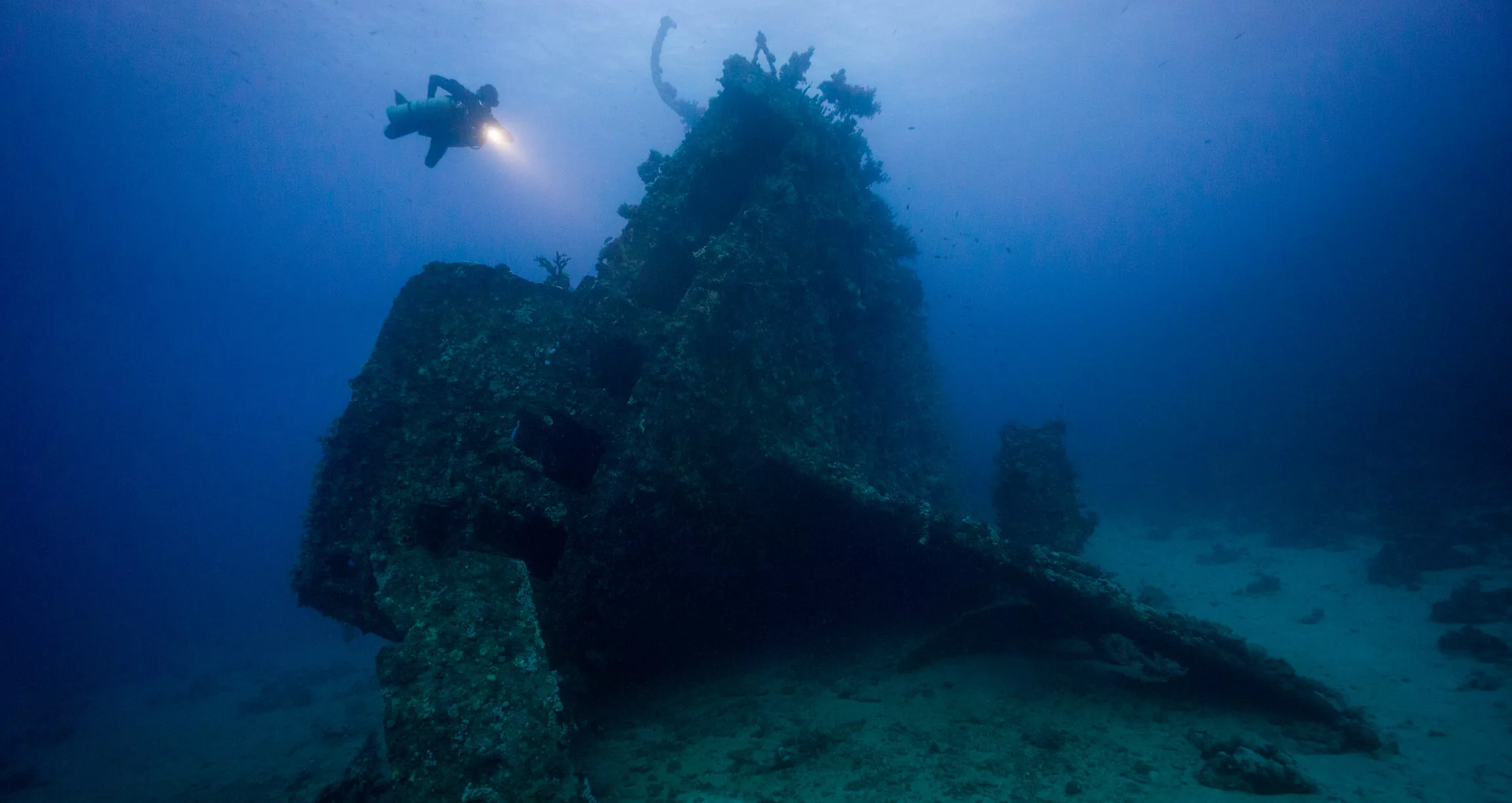No visit of Komodo National Park in Indonesia is complete without a visit to see the most remarkable inhabitants of the park. That is of course Varanus komodoensis, better known as the ‘Komodo Dragons’.
Komodo has a rich marine ecosystem. The area is at the convergence of strong currents flowing from both the Pacific and Indian Oceans. The visibility is crystal clear all year round and should be on every divers bucket list. Although our Komodo itineraries aboard the Indo Master cater mainly to scuba diving, you will have the chance to visit Komodo Island and see this amazing “dragon”.
Every trip, we allocate one morning to invite interested guests for a once in a lifetime opportunity to encounter the Komodo Dragon in its natural habitat.

What are Komodo Dragons?
The dragons inhabit the islands or Komodo, Rinca, and Padar. You can see them the wild through walking trails in the bushy forests. For safety reasons, anyone who wishes to do the walk with dragons need to be accompanied by at least two park guides.
This lizard is the biggest lizard in the world and is endemic. This means you cannot find it anywhere else in the world. This is the reason why this dragon is Indonesia’s national animal.
You should not take Komodo Dragons lightly. They can grow up to 9 feet long, weigh over a hundred pounds, and eat up to 80 percent of their own body weight in one sitting. The chances of running into them are higher earlier in the day when they sunbathe to help with food digestion. By midday, they disappear to seek shelter from the heat, in the thick bushes of the island. Komodo dragons are carnivores, their diet mostly includes wild boars and Timor deer that also inhabit the island. Adult dragons are also cannibals. They eat smaller members of their own species and sometimes even other adults.
There are only over 1,500 individual lizards left on Komodo Island, approximately 1,300 on Rinca Island, and just over a dozen in Padar. They are sadly now classified by the IUCN as Endangered and are listed on the IUCN Red List. The biggest threat to the dragons is deer poaching. Deer are the dragons’ main prey, so with less food available the dragon population tends to decline also. Human activity and rise of population in the area has also a negative impact.
What to take on your hike?
The trails we visit are flat and easy, and for safety reasons you are guided by at least two rangers. As this early morning activity lasts about 45-60 minutes, the first dive of the day is delayed to around mid morning and a night dive is offered on the same day to complete the 4 dives per day experience. Although the Komodo dragon walk is optional on the cruise, it is an amazing experience that you really should not miss. Before you hit the trails, rangers give a briefing of the park, rules and regulations, as well as the flora and fauna around the islands.
Things you may need for this activity:
- Sunscreen
- Hat
- Comfortable shoes / sandals
- Water bottle
- Indonesia Rupiah (for souvenirs)

Indonesia closed its borders at the start of the Covid 19 outbreak in March 2020, as did Komodo National Park. But with the recent announcement of border openings, we can’t wait to see them again in June! Though the teeming reefs of Komodo may be sparklingly rich, the Komodo Dragon is still, without doubt, one of the star attractions of this region, and of the entire Indonesian Archipelago.



